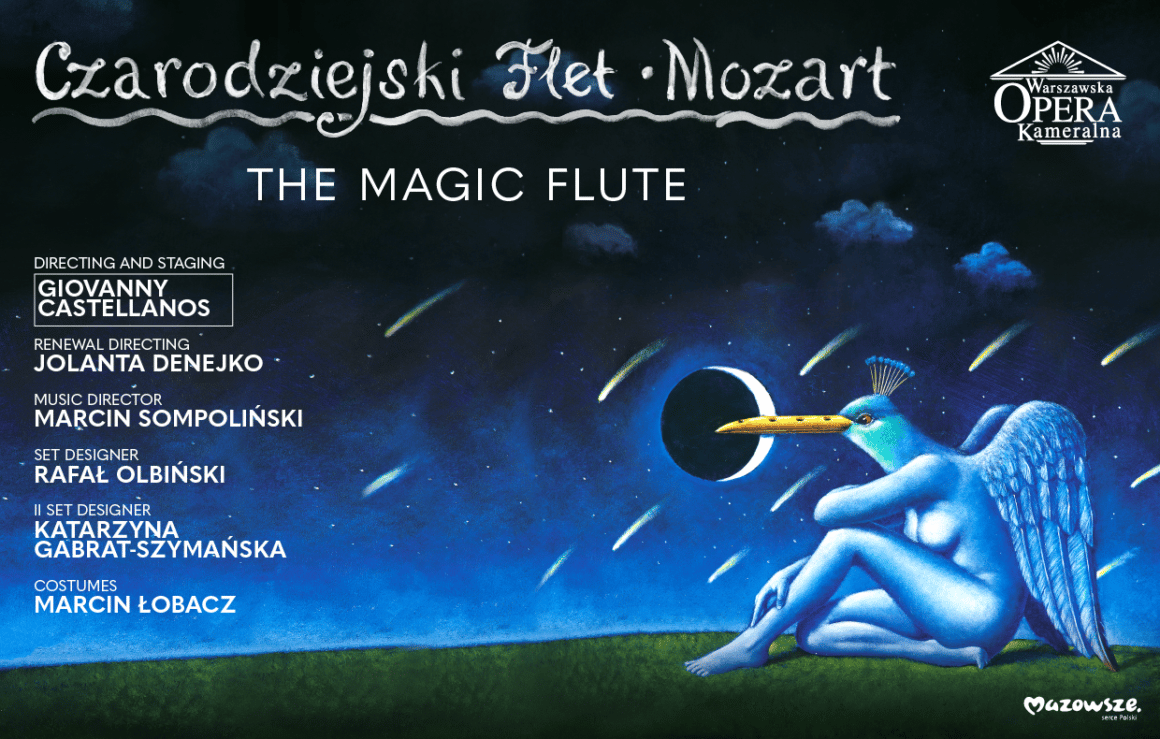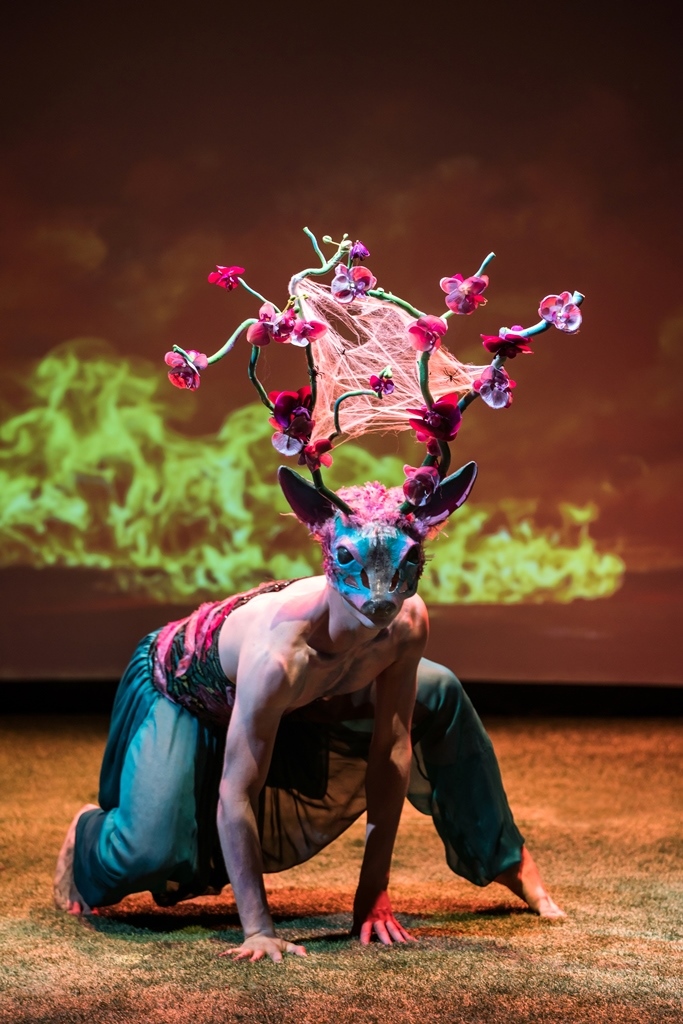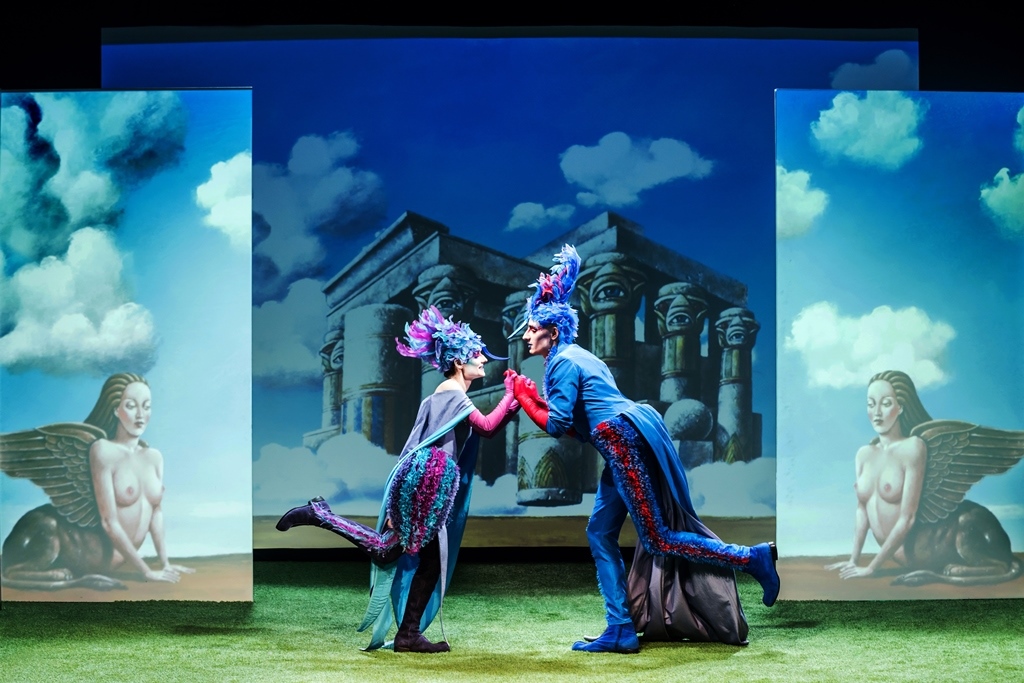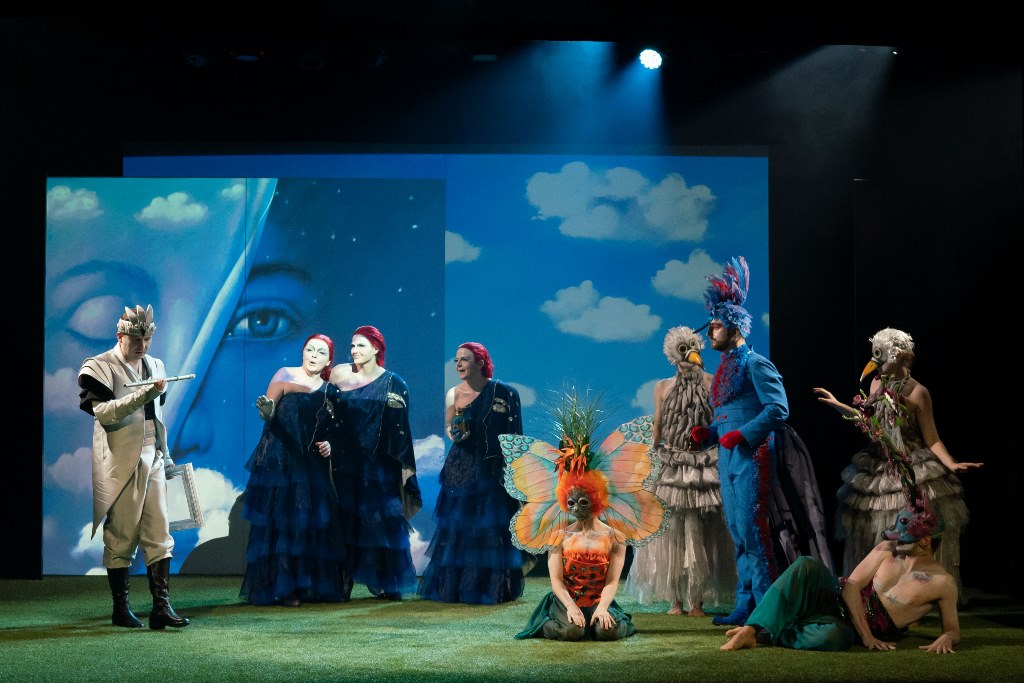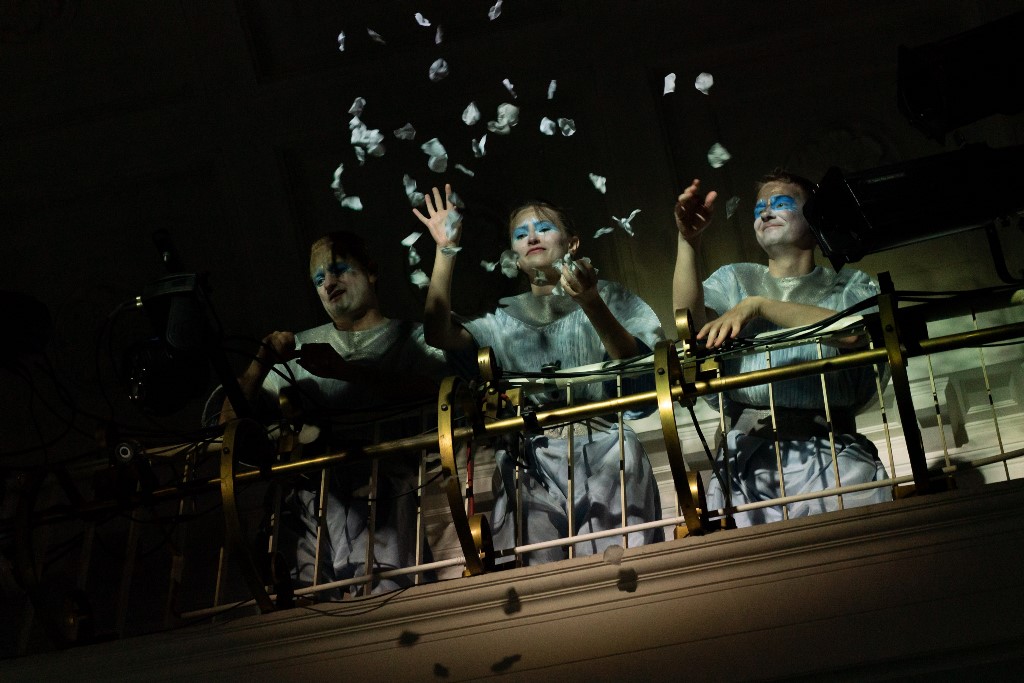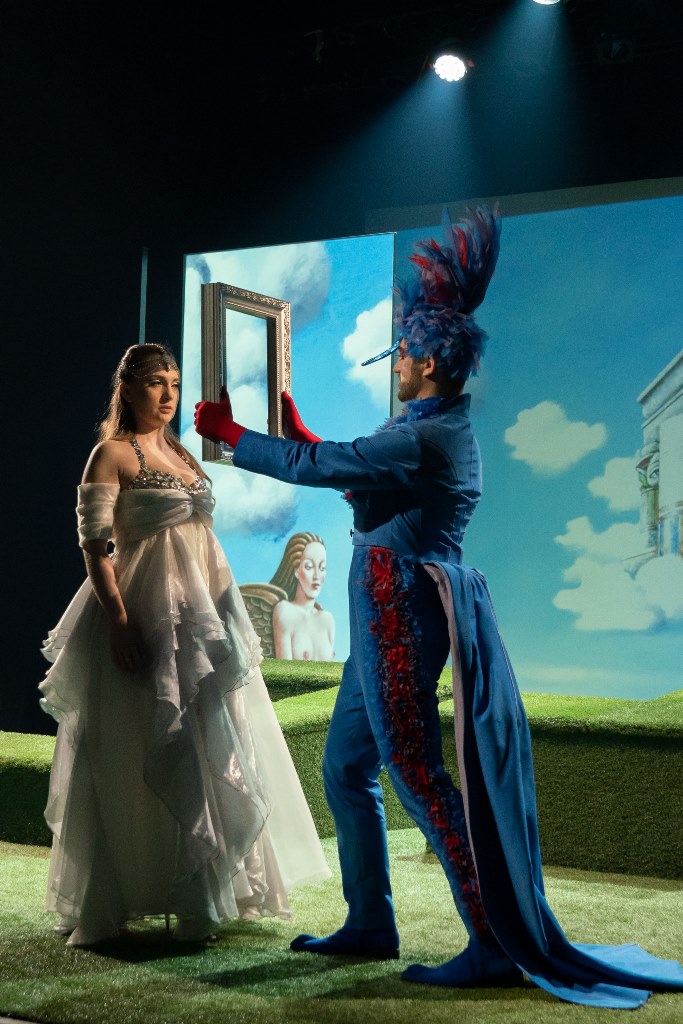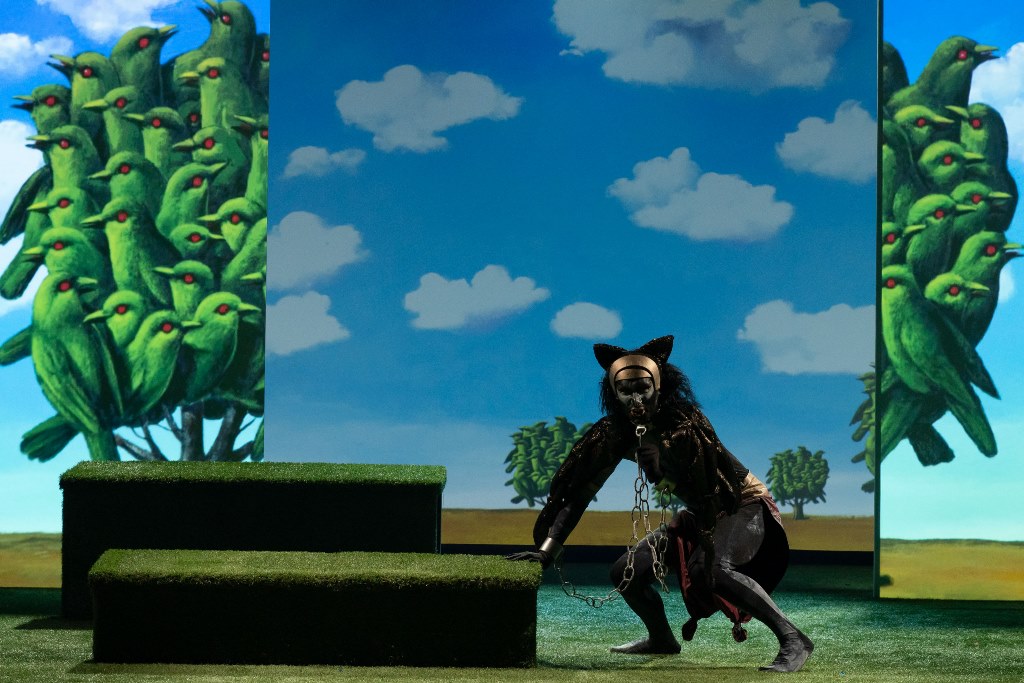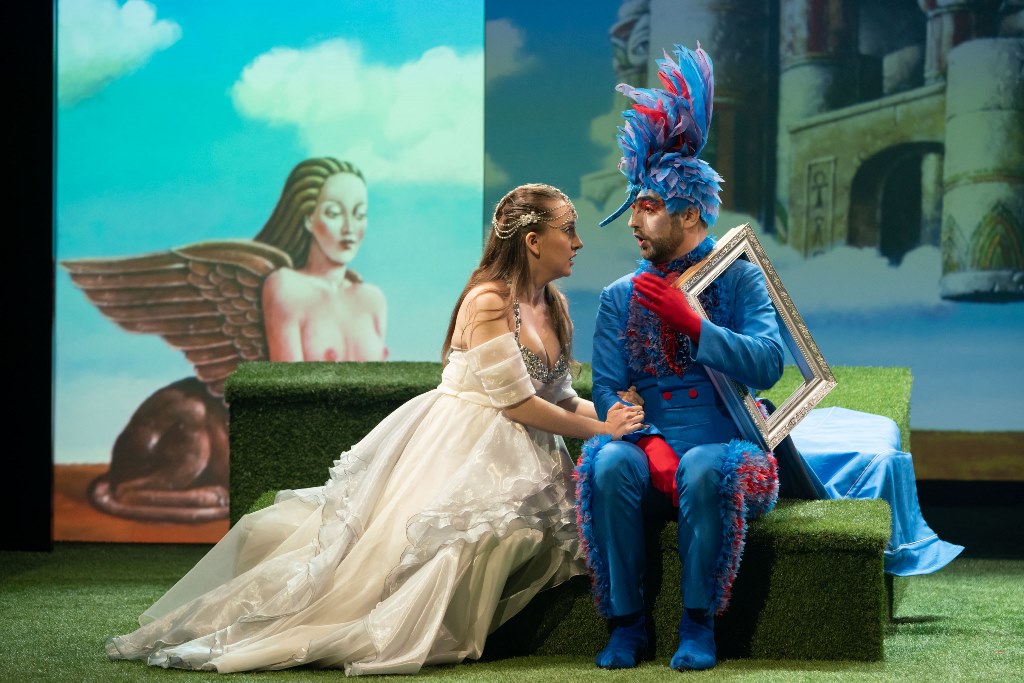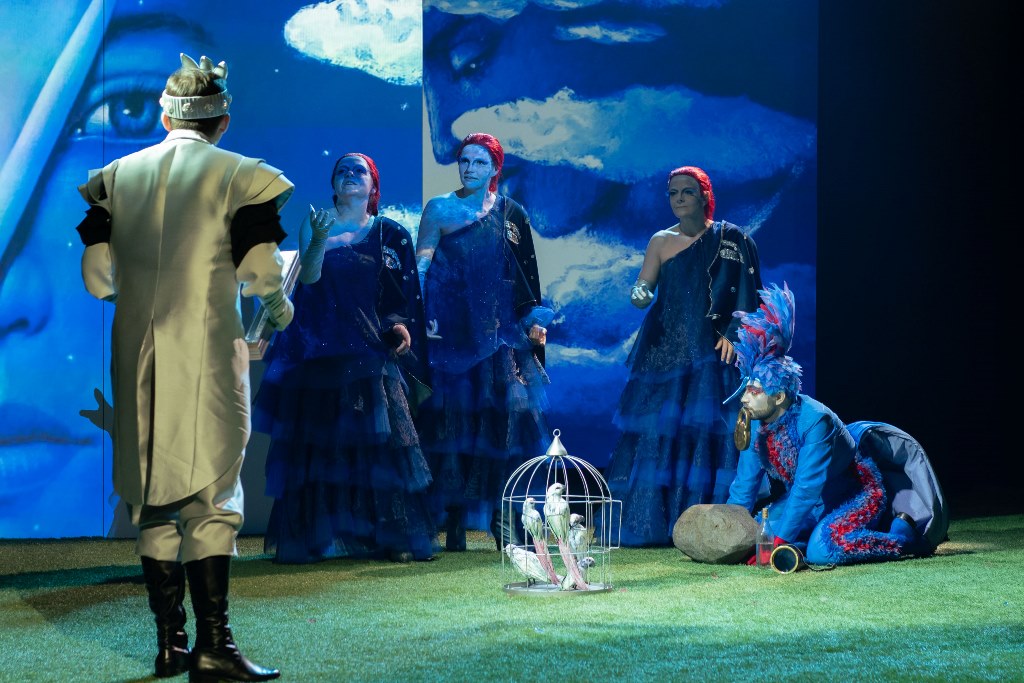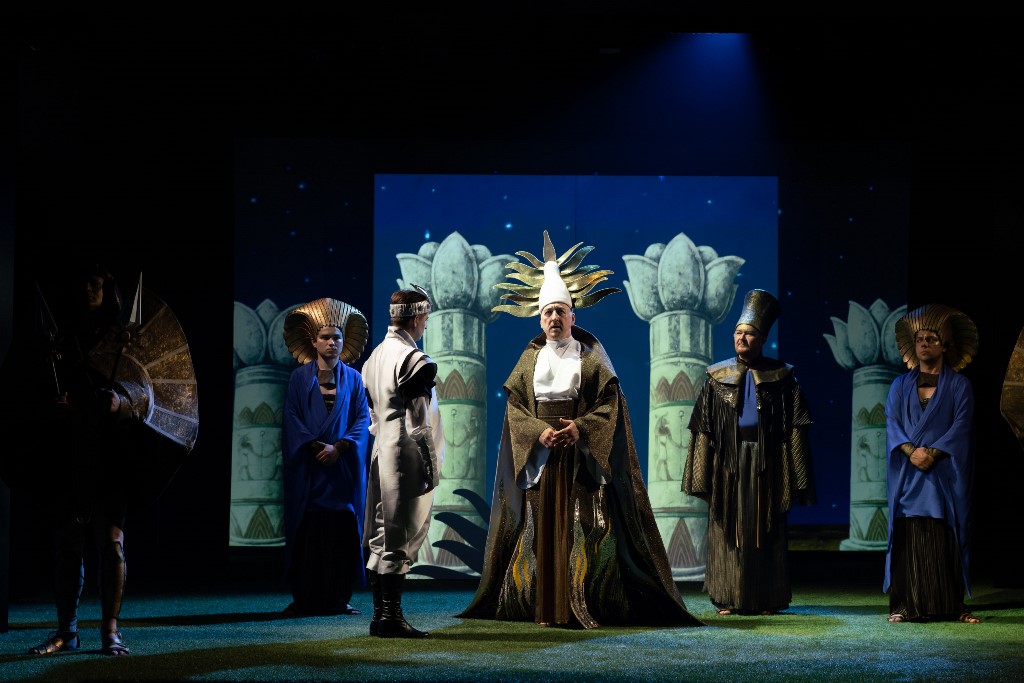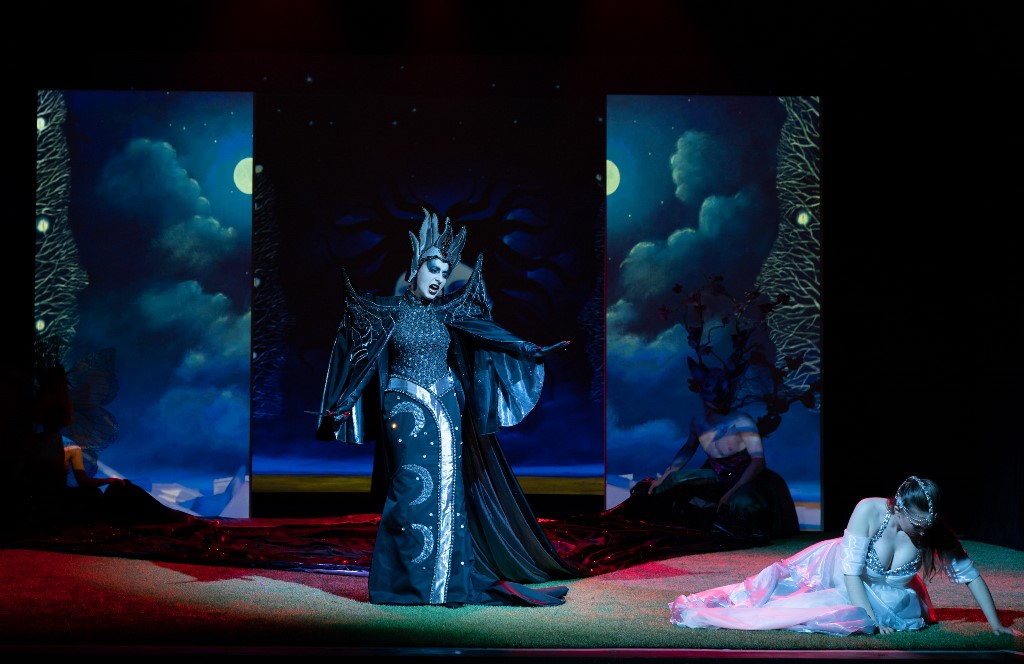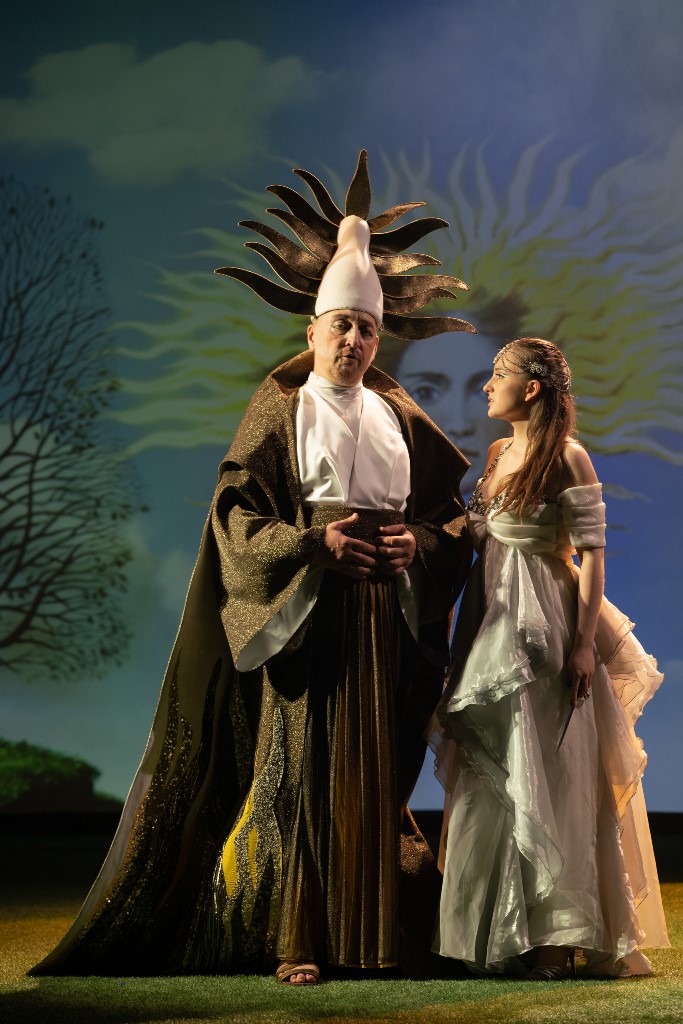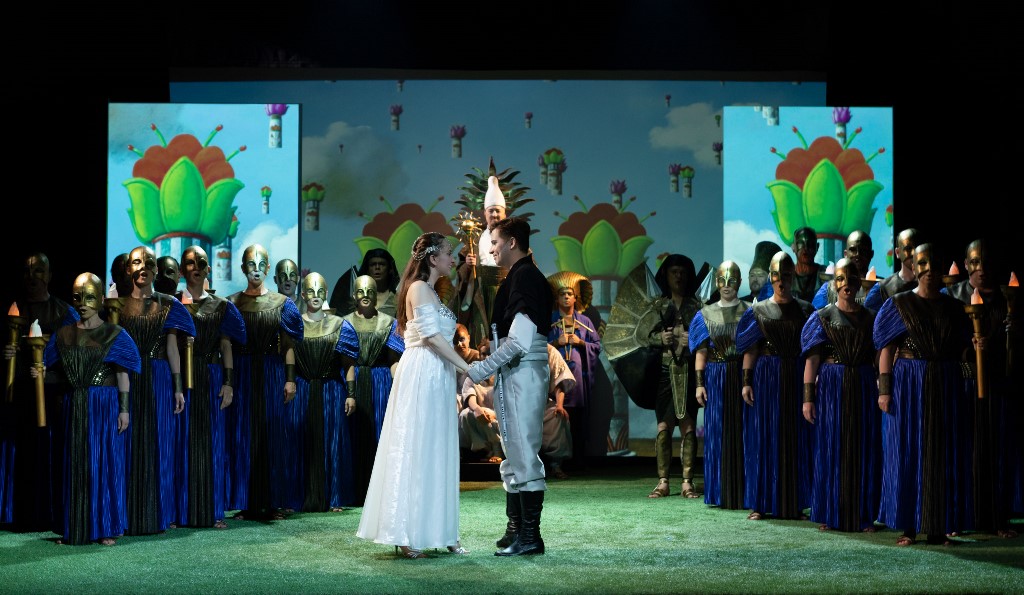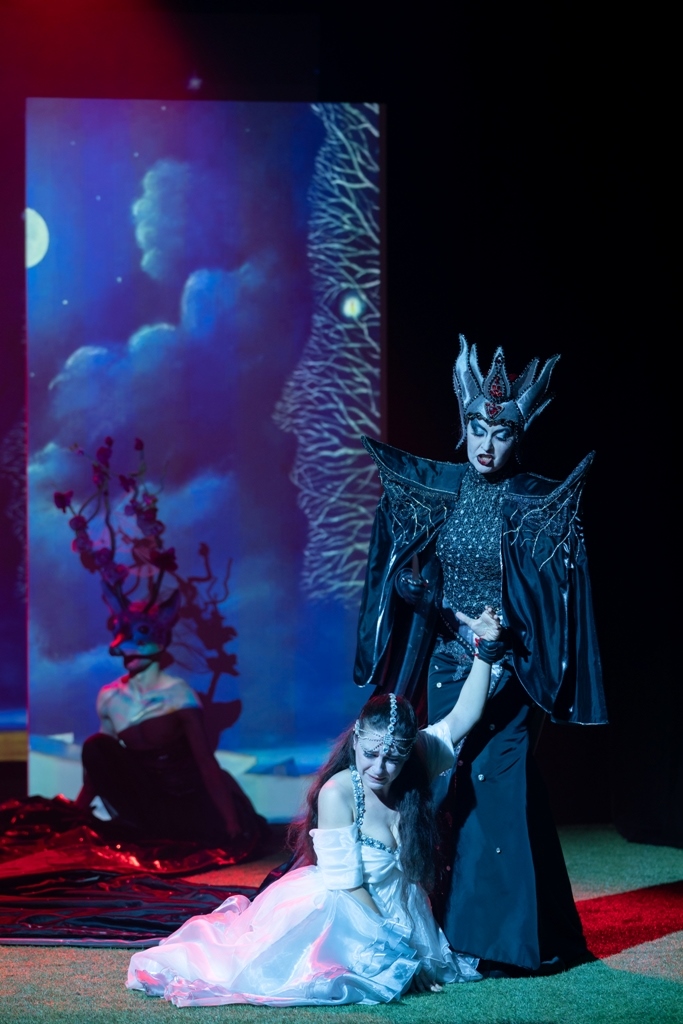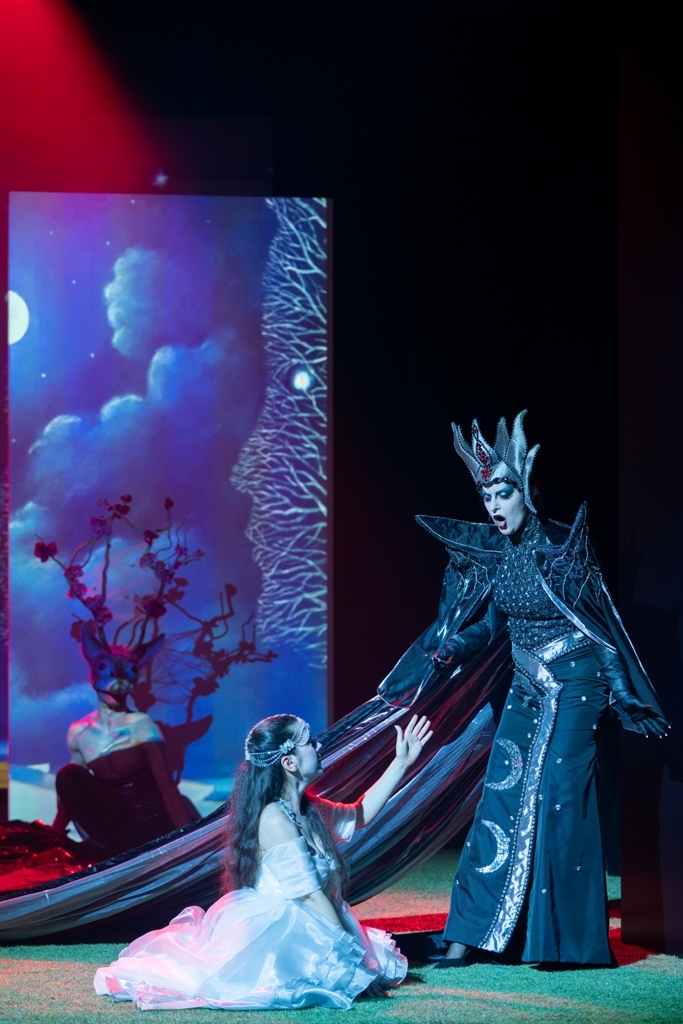32. Mozart Festival in Warsaw
Theatre of Warsaw Chamber Opera
Wolfgang Amadeus Mozart
The Magic Flute
Die Zauberflöte
English subtitles
Opera in two acts with Polish dialogues
Composer | Wolfgang Amadeus Mozart
Libretto | Emanuel Schikaneder
Premiere | 13 June 2019
Staging and director: Giovanny Castellanos
Revival: Jolanta Denejko
Music director: Marcin Sompoliński
Set designer: Rafał Olbiński
Costume designer: Marcin Łobacz
Choreographer: Jakub Lewandowski
Lighting director: Damian Pawella
Multimedia/graphics: Sylwester Siejna
CAST:
Sarastro | Remigiusz Łukomski
Queen of the Night | Joanna Moskowicz
Tamino | Emil Ławecki
Pamina | Anna Farysej
Speaker | Piotr Nowacki
Papageno | Paweł Trojak
Papagena | Katarzyna Drelich
Monostatos | Piotr Maciejowski
I Lady | Sylwia Krzysiek
II Lady | Dominika Kościelniak
III Lady | Małgorzata Kustosik
I Boy | Lucyna Białas
II Boy | Marcelina Górska
III Boy | Bartosz Rajpold
I Armoured man / I Priest | Tomasz Grygo
II Armoured man / II Priest | Łukasz Górczyński
Dancers:
Bird-of-paradise I | Maria Bijak
Bird-of-paradise II | Agnieszka Borkowska
Magical Animal I | Anna Szpaczyńska
Magical Animal II | Kamil Wawrzuta
Slave I | Jarosław Mysona
Slave II | Patryk Gnaś
Vocal Ensemble of Warsaw Chamber Opera
Chorus master: Krzysztof Kusiel-Moroz
Ancient Instruments Ensemble of Warsaw Chamber Opera
Musicae Antiquae Collegium Varsoviense
Conductor
Marcin Sompoliński
The Magic Flute is considered to be one of Mozart’s greatest stage masterpieces. The opera was created in the year of Mozart’s death, and its stage life has continued uninterruptedly since the end of the 18th century. Even such masterpieces as The Marriage of Figaro or Don Giovannni are not as popular. What is the magic of this particular piece? The Masonic symbolism contained in a slightly elaborate libretto, or perhaps a particularly fantastic vision of an unreal world that can be found everywhere and nowhere? The director’s vision of Giovanny Castellanos, who tried to exploit the full potential of absolute fantasy and masterfully incorporated into this bizarre libretto of the most brilliant music, lean towards the latter interpretation. Mozart surprises here with a variety of forms: choirs, arias, coloraturas, songs, great ensembles and finals. The composer also shows a unique catalogue of characters, some of which are balancing on the edge of a semi-buffa (Papageno, Papagena, Monostatos), and others are vividly taken from the opera series (The Queen of the Night – the evil witch, Sarastro – the good priest, Pamina and Tamino – a couple of lovers, choirs of priests). There are also completely new elements unknown from earlier opera conventions – Guardians, Three Boys, Three Ladies. All these elements have been given a special musical aura by Mozart, and each character has its own unique features of the musical language. Olbiński’s set design describes this dreamlike-surreal world in a way literally full of fantasies, associations and allusions, but at the same time friendly to the viewer. Marcin Łobacz’s costumes emphasize the animal-fairy-tale associations, giving the whole a unique aesthetic dimension.
***
The new staging of The Magic Flute is a development of the theatrical tradition of the Warsaw Chamber Opera, its creative continuation with the use of new possibilities offered by today’s technology. This was noticed by Dorota Szwarcman from the “Polityka” weekly newspaper:
– The boisterously announced event did not disappoint, on the contrary – it literally charmed the audience, who awarded the artists and creators with long standing ovations. This delight was aroused by the excellent performance and incredible visual coherence – wrote Anna Krajkowska (niezalezna.pl) after the premiere. The authors of the visual side did not dominate the performance, but brought out its charm, magic and chic. This is largely due to the sensational colour selection. The various shades of navy blue dominating the stage are a beautiful, exceptionally dignified background. They add depth to the fantastic graphics that appear there, but also do not overshadow the actors. There are many ancient and fairy-tale motifs here. It is impossible not to pay attention to the opening and closing cat’s eye. The stunning costumes perfectly correspond with the scenery. Marcin Łobacz, a young fashion designer with a breath-taking career in London, created clothes so consistent with Olbiński’s works that sometimes you had the impression that the characters came out, emerge from the scenery. It’s amazing! – the critic marvelled.
***
Although the director of the new version of “The Magic Flute” at WCO is a Colombian living in Poland, who work, among others, with Krystian Lupa and Andrzej Wajda, it is the set designer, Rafał Olbiński, who left the greatest mark on the show. This scenography consists mainly of animated projections in the style typical of a well-known poster artist. However, in this performance they have more charm and wit, they are more fabulous. They are also matched with fairy-tale costumes by Marcin Łobacz, a young fashion designer who has already dressed Cher or Rihanna. The costumes of the Queen of the Night as well as Papageno and Papagena are especially lightsome. There was created a performance for both adults and children, the more so as the dialogues are spoken in Polish (usually they are performed in the original language – German). What’s more, the spectacle is also musically attractive. Practically all the main characters are good: Pamina (Ingrida Gapova) and Tamino (Aleksander Kunach), Papageno (Artur Janda), Queen of the Night (Joanna Moskowicz) and Sarastro (Krzysztof Borysiewicz), also the supporting roles are of the good level. The orchestra is led thoughtfully by Marcin Sompoliński.
Dorota Szwarcman – Polityka
Above all, this set design cannot overwhelm people with scale. You have to surprise the viewers with a surprise, one would like to say – with beauty. If it succeeds, it will be fantastic – said Olbiński during a conversation with me. And we did it. The authors of the visual side did not dominate the performance, but brought out its charm, magic and chic. This is largely due to the sensational colour selection. The various shades of navy blue dominating the stage are a beautiful, exceptionally dignified background. They add depth to the fantastic graphics that appear there, but also do not overshadow the actors. There are many ancient and fairy-tale motifs here. It is impossible not to pay attention to the opening and closing cat’s eye. The stunning costumes perfectly correspond with the scenery. Marcin Łobacz, a young fashion designer with a breath-taking career in London, created clothes so consistent with Olbiński’s works that sometimes you had the impression that the characters came out, emerge from the scenery. It’s amazing!
Maestro Marcin Sompoliński has a hand for Mozart, which is heard in “The Magic Flute”, and listening to the music lovers’ beloved opera by the Salzburg master performed on ancient instruments by MACV orchestra is a pure pleasure. The singers did a great job. Aleksander Kunach in the role of Tarnino and Joanna Moskowicz as the Queen of the Night have delighted more than once.
I was taken by sensitivity and beautiful voice of Ingrida Gapova in the role of Pamina, and Artur Janda as Papageno charmed me with his brilliant vocal and acting performance. This is another challenging role that Janda has recently been entrusted with in the premiere performance on the WCO stage. He shone as Orpheus, later as Figaro (“The Marriage of Figaro” can be seen as part of the Mozart Festival on 21, 22 and 23 June), and now he delights and entertains as Papageno. It is not surprising that the artist was nominated for the 13th Jan Kiepura Theatre Music Awards in the category best opera singer (Marcin Sompoliński was nominated in the category best conductor). The figure of Bird-Catcher is colourful and humorous in the libretto itself. Giovanny Castellanos added to it a little more comedy, just by weaving a funny chant in the scene where Papageno was put to the test of silence.
Anna Krajkowska – Gazeta Polska
The opera “The Magic Flute” has already been subjected to various interpretations, here it’s been used traditional, conservative and fairy-tale. The scenery was designed in accordance with his recognizable style of naive surrealism by Rafał Olbiński, and the costumes full of fantasy, slightly based on ancient Egyptian motifs were proposed by Marcin Łobacz. The chamber choir was prepared by Krzysztof Kusiel-Moroz. The honorary patronage over the premiere was taken by the Austrian Ambassador Dr. Werner Almhofer. As we all know, nobody can take Mozart away from Austrians.
Joanna Tumiłowicz – Maestro.pl
The world from Rafał Olbiński’s posters effectively came to life in the “The Magic Flute” at the Warsaw Chamber Opera. The performance is visually pretty, attractive and audience-friendly, which is not often the case in contemporary theatre. The producers did not try to discover hidden meanings in Mozart’s masterpiece, although there are plenty of them, which other producers are trying to prove – sometimes even by force.
The hero of the Warsaw production is also Marcin Łobacz. His costumes inspired by the aesthetics and colours of Rafał Olbiński’s works create a coherent, surreal world. It is worth appreciating in this designer a great sense of colour nuances and the ability to combine them in various variants. Finally, the group of performers at the Warsaw Chamber Opera was selected carefully and, above all, with an understanding of the requirements of Mozart’s music. On stage, we have an overview of various artistic generations – the experienced Krzysztof Borysiewicz (Sarastro), who came from abroad, the perfect Joanna Moskowicz (Queen of the Night) and Artur Janda (funny, but not exaggerated Papageno) or the young Aleksandra Żakiewicz (Papagena).
Jacek Marczyński, Rzeczpospolita


